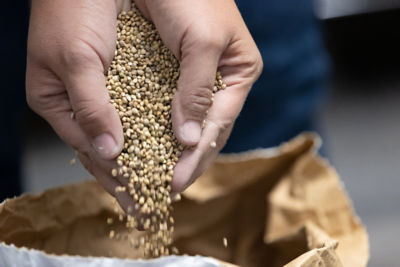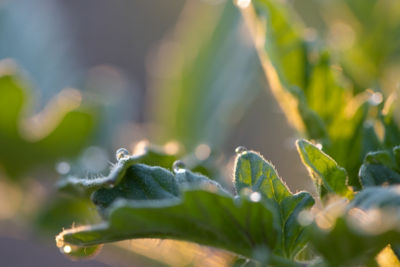Causal Agent
Leek yellow stripe virus (LYSV)
Vector
Many species of aphids
Distribution
Worldwide
Symptoms
Symptom expression can vary by type. In green leeks, leaves of infected plants develop longitudinal yellow stripes and plants appear yellow. In grey leeks, symptoms appear milder and stripes are grey-green. Generally, stripes are more prominent in older leaves. Leaf cuticles of infected plants are thinner than those of healthy plants, and the leaf surface is often rippled in appearance. Infected plants are stunted, lack vigor and may be more prone to frost injury than healthy plants.
 Note rippled areas of infected leaves.
Note rippled areas of infected leaves.
 Longitudinal streaking in mature plants.
Longitudinal streaking in mature plants.
Conditions for Development
While principally a pathogen of leek, onion and garlic are also hosts of this virus. Because leeks are vegetatively propagated, leek yellow stripe may be spread through pruning and handling infected plants and bulbils. The virus is transmitted by many aphid species in a non-persistent manner. Cool temperatures and low light favor disease development. Early infections affect plants more severely than those that occur late in the growing season. Infected plants may recover under higher temperatures that favor growth of the host.
Control
Cultural practices that promote vigorous plant growth can help to reduce losses from this disease. Mechanical transmission is best managed by following proper sanitation practices during vegetative propagation. Rogue infected plants and control aphids to reduce incidence of LYSV . This virus is not seed transmitted.




